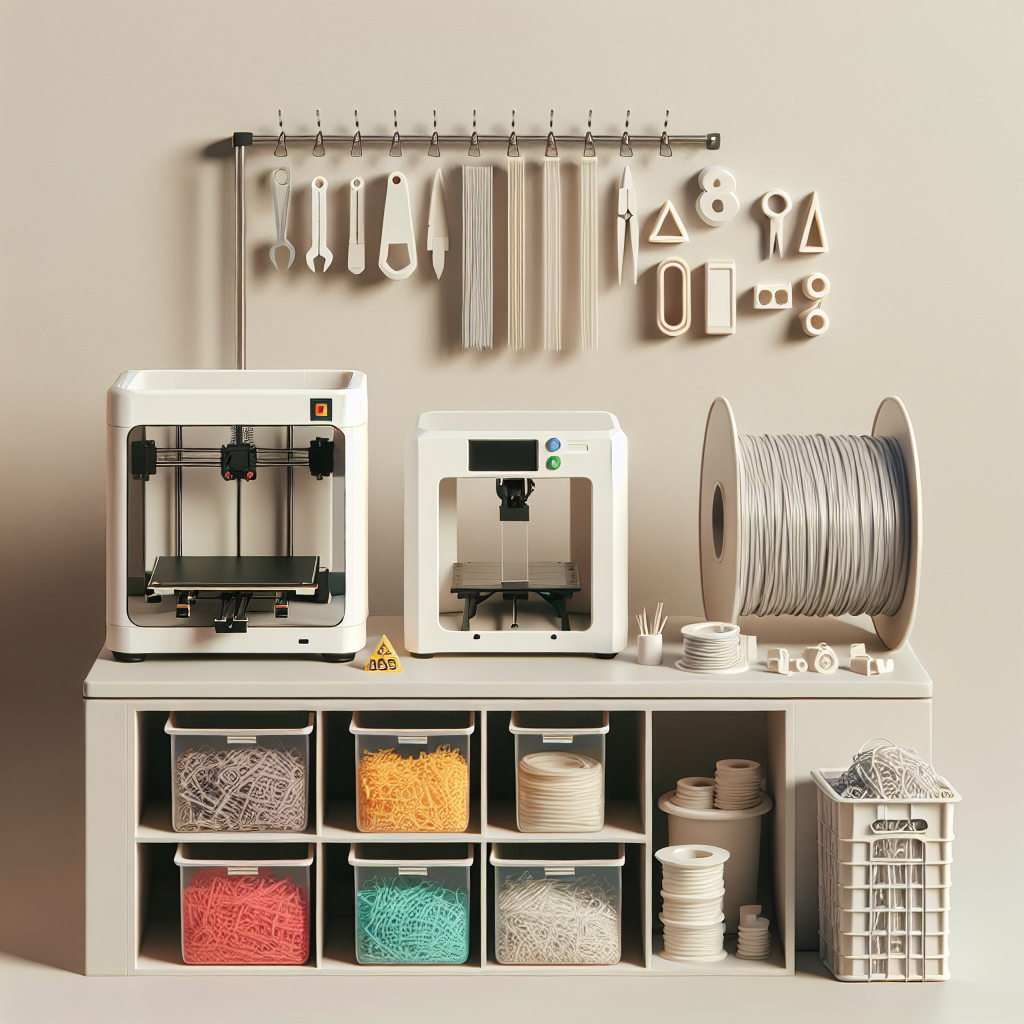Understanding 3D Printing Waste: Why Recycling Matters
Every 3D printing enthusiast knows the frustration of a failed print. Whether it’s a tangled spaghetti mess, a warped base, or a broken support, these mishaps quickly accumulate into piles of plastic. Not only do failed prints waste filament and money, but they also contribute to environmental concerns—especially as home 3D printing grows in popularity. Thankfully, there are effective ways to recycle these failed prints and significantly reduce your waste footprint.
Sorting and Preparing Failed Prints for Recycling
Before you start recycling, it’s important to sort your failed prints by material type. Most hobbyists use PLA, but ABS, PETG, and other filaments are also common. Mixing materials can complicate recycling, so keep each type separated. Remove any non-plastic components, such as metal inserts, support materials, or painter’s tape. Cleaning and sorting your scraps ensures the best results in later recycling steps.
DIY Recycling: Turning Scraps Into Usable Filament
One of the most direct ways to recycle failed 3D prints is by transforming them back into printable filament. This process, known as filament extrusion, requires specific equipment but offers complete control over your recycling process.
- Shredding: Use a plastic shredder to break down failed prints into small pieces. There are desktop shredders available specifically for 3D printing waste, or you can repurpose a heavy-duty kitchen appliance (with caution).
- Extruding: Feed the shredded plastic into a filament extruder. Devices like the Filastruder or FilaFab melt the plastic and push it through a nozzle, reforming it into new 1.75mm or 2.85mm filament. Collect the filament on a spool, making sure it cools evenly for consistent diameter.
While initial investment in a shredder and extruder is required, this setup pays off in the long run—especially if you print frequently.
Community Recycling: Filament Collection Programs
If DIY recycling isn’t feasible, consider local or online recycling programs. Several organizations and filament manufacturers offer collection points or mail-in services for failed prints and excess filament. They process the waste at scale, often turning it into recycled filament or other plastic products. Research what options are available in your area, as participation can help keep plastic out of landfills.
Creative Reuse: Repurposing Failed Prints
Not all recycling needs to be industrial. Many makers repurpose failed prints for practical or artistic uses:
- Sculpture and Art Projects: Use scraps as raw material for sculptures, mosaics, or functional art.
- Test Pieces: Save failed prints for future material, adhesion, or painting tests.
- Functional Parts: Cut or modify failed prints into clips, spacers, organizers, or desk accessories.
Sharing your creative reuse ideas within the 3D printing community can inspire others and help reduce waste collectively.
Best Practices to Minimize Failed Prints
While recycling is crucial, the best way to reduce waste is to prevent failed prints in the first place. Here are a few tips to improve your printing success rate:
- Regularly calibrate your printer’s bed and nozzle.
- Use high-quality, properly stored filament to avoid moisture-related issues.
- Check models for errors using slicing software’s repair tools.
- Start with smaller test prints before committing to large objects.
- Stay updated with firmware and slicing software improvements.
Conclusion: Building a Sustainable 3D Printing Practice
Failed 3D prints are an inevitable part of the learning curve, but they don’t have to be wasteful. By recycling your prints—either at home or through community programs—and adopting smart printing habits, you can minimize your environmental impact while enjoying the creativity and innovation 3D printing offers. Let’s make 3D printing greener, one print at a time!

Leave a Reply